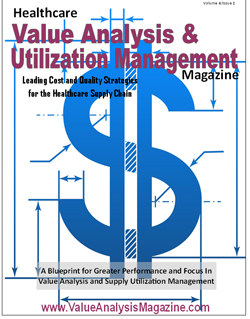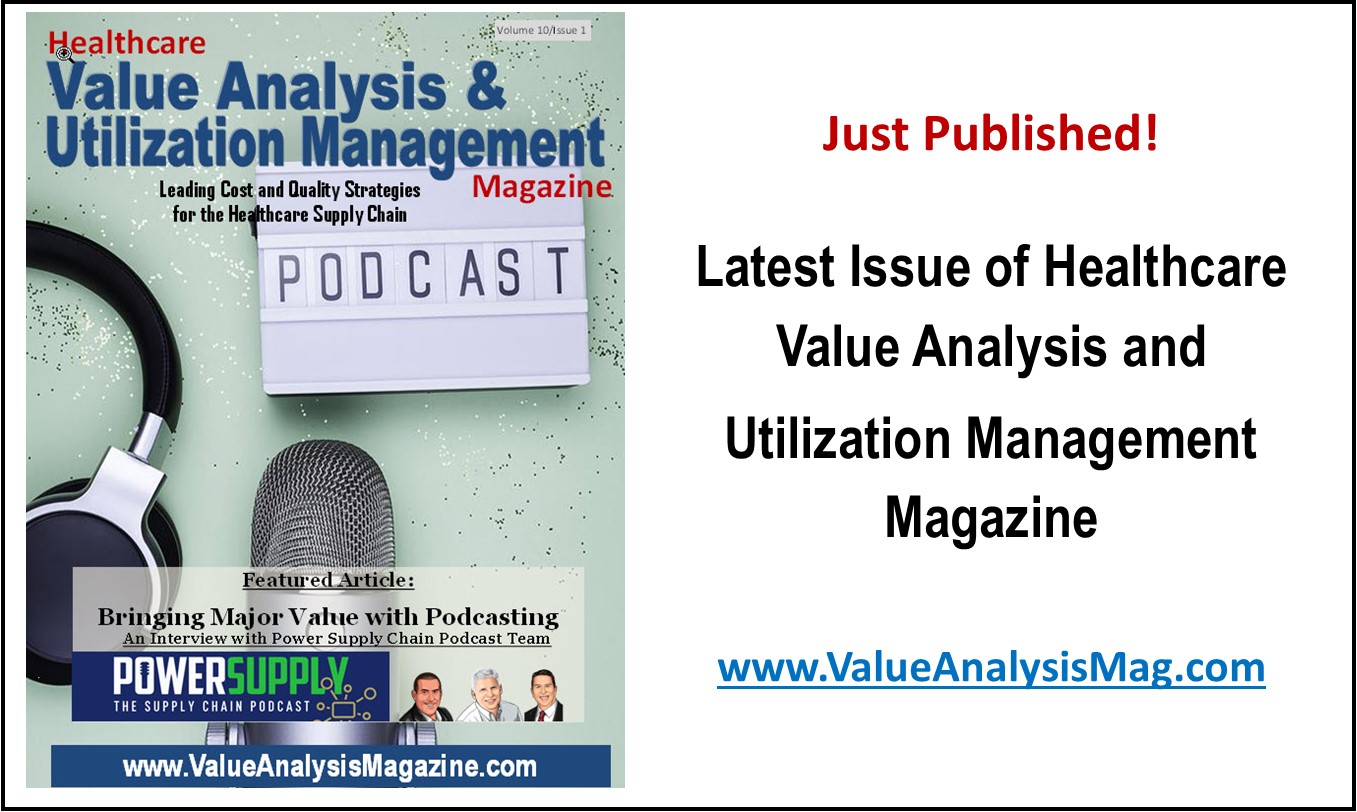Robert T. Yokl, President/CEO, SVAH Solutions
We all say we want to hear the voice of the customer in all decisions related to their product, service, and technology requests, evaluations, or studies, but do you have a failsafe system to do so? If not, missing just one customer (collectively known as customers, stakeholders, and experts) in your hospital value analysis process can be fatal. By fatal, I mean that they will be uncooperative, unresponsive, and territorial once they find out you left them out of the decision-making process. Trust me, they will find out from someone in their peer group.
Definition of Customer, Stakeholder, or Expert
- A customer is anyone who touches the product, service, or technology throughout its lifecycle.
- A stakeholder is a party or parties that have a vested interest or can influence the product, service, or technology decision.
- An expert is someone that knows the most about this commodity, inside or outside your institution.
6-Step Value Analysis Customer Mapping Process
Realizing how critical it is to identify and then listen to the voices of our customers in our value analysis process to ensure the quality and credibility of our evaluations and studies, how then do we think we can assess our customers’ exact requirements? Based on the imperial experience of SVAH’s customers and by employing many of the concepts taught by the late J.M. Juran, the man who taught Japan how to manage quality, we have found the following six-step Value Analysis Customer Mapping Process to be extremely effective in doing so:
1. Identify who the customers are for each product, service, or technology under investigation. This can be accomplished by researching their usage patterns in your healthcare organization’s ERP or materials management information system to identify current users. Then, sort and classify your customers by the terms “Vital Few” and “Useful Many” or 80/20 Rule.
2. Determine the primary, secondary, and aesthetic functions for the customers’ needs. Then, prioritize and rank by order of importance. This can be accomplished by interviewing and shadowing your “Vital Few” customers and surveying your “Useful Many” customers. The reason for this is that all functions aren’t as important as others to your customers, so you need to know what is negotiable and what is not.
3. Translate their functions (primary, secondary, and aesthetic) into our language. M. Juran found that, “Customer needs (or functions) may be stated in any of several languages: The customer’s language, our language, (or) a common language,” and most often in vague terms or terminology. That’s why a value practitioner’s language always includes “a verb and noun” to describe a function. Therefore, we need to work with our customers to correctly describe their functions to get it right the first time.
4. Look for opportunities for improvement that are holding back savings and quality gains. With rare exception, internal and external customers do not complain or report to anyone waste and inefficiencies in the methods and practices regarding products, services, or technologies they have observed or experienced. Therefore, during your interviews and shadowing of your customers, you will uncover scores of opportunities for improvement you can turn into savings and quality improvements for your healthcare organization.
5. Develop win/win alternatives that can meet your customers’ needs and your needs. To paraphrase the late great speaker Zig Ziglar, “You can have anything in life you want, if you help enough other people get what they want.” With this said, effective change can only be made if the person experiencing the change agrees that this change will make their job or life better. The challenge of a value analysis practitioner is to find win/win lower cost alternatives that can meet their customers’ needs as well as their own needs for savings and quality improvement.
6. Prove that the new product, service, or technology works in the real world. It is important to emphasize that even the best savings or quality improvement ideas must be tested in the REAL WORLD to ensure that they meet the requirements of your customers in their eyes, not yours. Therefore, you must test your assumptions with a pilot study, simulation, or parallel study to determine the efficiency of your solutions in a controlled study environment.
Based on our empirical experience, these six steps are the most critical stage of any value analysis study that you would undertake due to the fact that all value analysis studies are customer driven and must be designed to meet your customers’ requirements exactly. We absolutely want to know their likes and dislikes, what does and does not work, and what they think are and are not the most important functions and features. This is not a game, but a scientific process to truly understand our customers’ unique requirements. This Value Analysis Customer Mapping Process should be the foundation of your value analysis methodology if you are looking to repeatedly satisfy and delight your customers.
| About Robert T. Yokl, Founder & Chief Value Strategist for SVAH Solutions |
|---|
| Robert T. Yokl is President and Chief Value Strategist at SVAH Solutions. He has four decades of experience as a healthcare supply chain manager and consultant, and also is the co-creator of the Clinitrack Value Analysis Software and Utilizer Clinical Utilization Management Dashboard that moves beyond price for even deeper and broader clinical supply utilization savings. Yokl is a member of Bellwether League’s Bellwether Class of 2018. https://www.SVAH-Solutions.com https://www.SavingsValidator.com |
Articles you may like:
5 Tips to Better Visualize Data You Want to Present to Get More Yeses on Your Proposals
5 Tips to Better Visualize Data You Want to Present to Get More Yeses on Your Proposals





